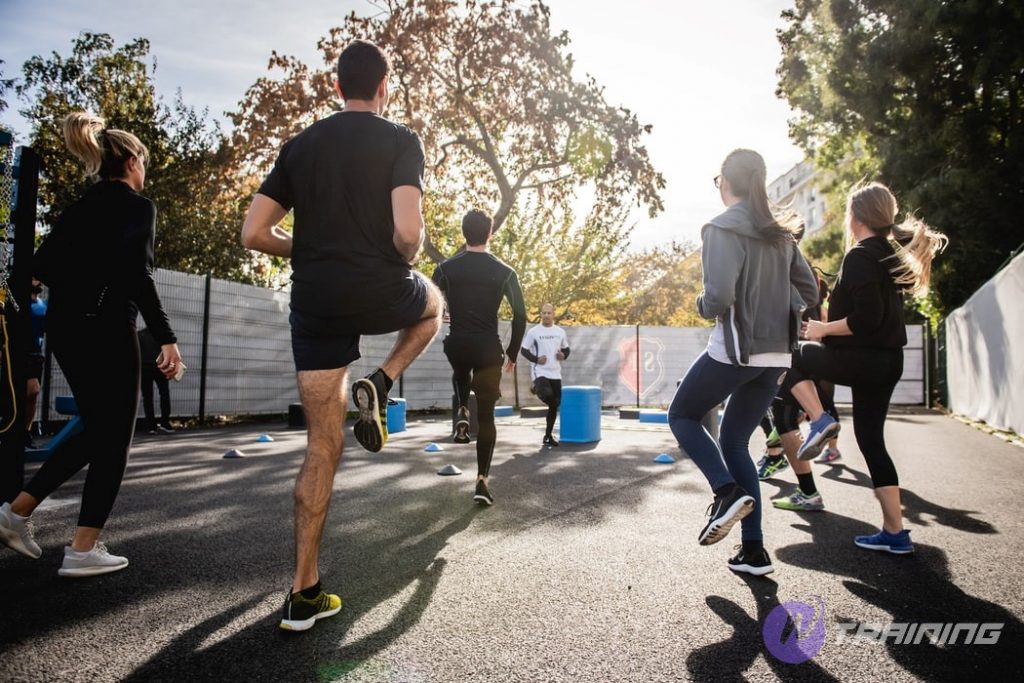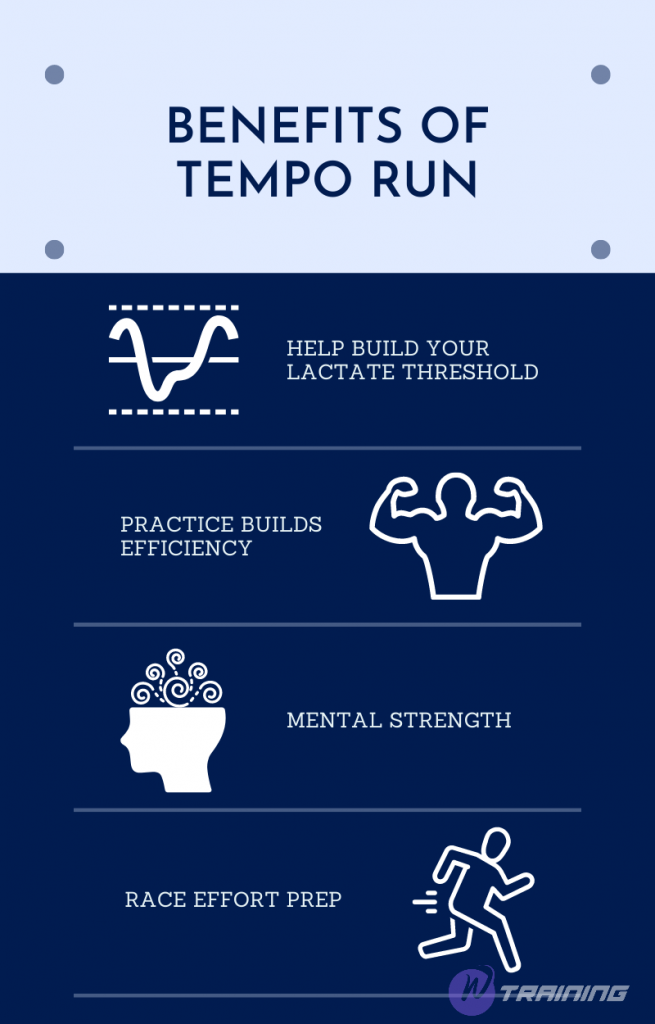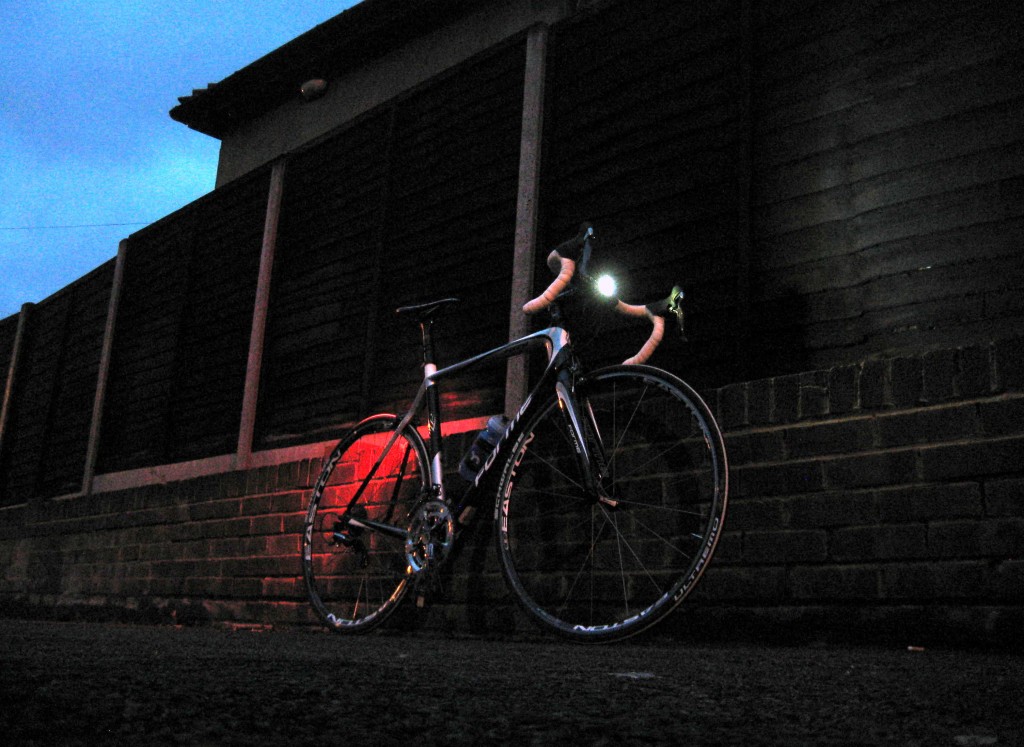You know what it feels like to run easy and you’re probably also familiar with the burn of going nearly all out. But what about the paces between those two levels? Workouts that target that middle ground – tempo run – should be part of your weekly routine.
What exactly is it?
A Tempo Run is intended to be completed at or near the Lactate Threshold pace. Lactate Threshold is the transition from mostly aerobic to mostly anaerobic metabolism. Paces below the Lactate Threshold can be maintained for extended periods of time (several hours) in well-trained athletes, whereas paces near the Lactate Threshold typically cannot be maintained for more than an hour.
Tempo Run is used when you want to practice keeping a steady pace for 20-60 minutes. This run’s average heart rate is between 80 and 85 percent of the maximum heart rate. The average foot rate is between 88 and 92 times per minute.
The exercise is difficult to perform and requires techniques in regulating breathing, often used in the final stages of lesson plans. Usually accounts for 10% of the exercises in the plan.
Variations of tempos
-
Classic 20-minute tempo run
Sjödin’s team used this in their experiment, and it’s still a great workout: 20 minutes at your best VOBLA estimate. (You can also do this as a 3-mile run if your tempo pace isn’t too different from 20 minutes.)
If you’re going to do this, I’d recommend starting with your best estimate of your tempo pace from the VDOT tables (or Friel’s time trial test, if you prefer to work by heart rate). If that seems too easy, you can let it drift slightly faster—but keep in mind that tempo pace is generally “fun-fast,” not “time trial-fast.”
-
Tempo repeats
These are a series of shorter tempo runs completed at the same pace as a traditional 20-minute tempo run. You could, for example, run 2 x 10 minutes (or 2 x 1.5 miles, if you prefer to think in miles). High-volume runners, particularly those training for a marathon, can increase the total time to well over 20 minutes if they wish (although some phase-in may be required).
My formula for these is to not exceed 20 minutes in any given repeat and to keep the total distance to 3 miles or 10% of weekly volume, whichever is greater. That means a 90-mile-per-week runner can theoretically do 3 x 3 miles—but unless they’re in marathon shape, they’ll probably find that too much. Most people are content with a total of 3 or 4 miles.
An easy jog for 60-90 seconds per mile of the preceding tempo repeat should be done in between repeats. For example, if you run 2 x 2 miles, your recovery time would be 2-3 minutes.
-
Cruise intervals
These are similar to tempo repeats, but they are shorter and done on proportionally shorter recoveries (short enough that on a track, you’ll probably just jog in a slow circle, returning to the point where you stopped the previous repeat in time to start the next).
Distances can range from 600 meters to one mile. Recovery times for 600 meters are 20-30 seconds, 60-90 seconds for a mile, and somewhere in the middle for intermediate distances.
Volumes can be one mile higher than for tempo repeats (for example, I use 11 x 600 as a substitute for a 3-mile tempo run), and paces can be 1-2 seconds per lap faster than your VDOT/Friel tempo pace, especially at 600 meters. This could be a good time to see how your body reacts to the pace recommended by the Conconi or 3,200-meter time-trial tests.
This is a fun, quick workout that is best completed with a pace-matched training partner so that you can begin each repeat together. The first half should be relatively easy. The “magic” happens later on, when those short recoveries start to feel…well, short.
-
Alternations
In the 1970s and 1980s, Australian runner Robert de Castella, who set the marathon world record of 2:08:18 in 1981, perfected a workout in which he alternated pace between faster than the threshold and slower than the threshold instead of completing a typical tempo run. Exercise physiologists now know what he was doing was training the body’s lactate shuttle, which shunts surplus lactate from hard-working leg muscles to tissues that can make better use of it in a process that may be especially effective at raising vOBLA. De Castella’s initial version went for 3 miles and alternated between quarters at a 5K pace and 200s at a minute per mile slower. But it’s possible to do many other variants, such as alternating between 600s at 10K pace and 400s at marathon pace or to run sets much shorter than 3 miles, separated by recovery jogs.
-
Predator runs
This “progression run” variation was inspired by Scott Simmons, the American Distance Project’s coach at the time, and Cory Ihmels, the head coach at Boise State University. The goal is to begin slowly and methodically as if you were a predator approaching its prey. Because you’re starting gently and gradually increasing your pace mile by mile, these can be longer than the traditional 20-minute tempo (possibly 6 to 10 miles, depending on your weekly volume). You’ll pass through vOBLA at some point during the run, which makes it a good choice if you’re not sure what your true threshold pace is. Just make sure you don’t turn the last mile into a race.
See also: 8 Types Of Runs Every Runner Should Know About
How to calculate your tempo?
The simplest method is to extrapolate from race pace. Your tempo speed (also known as threshold pace) is the fastest you can run a race lasting around an hour, according to Jack Daniels, author of Daniel’s Running Formula. Because 60 minutes is so near to a half-marathon time for elite men, they routinely undertake tempo runs at a half-marathon pace. For mortals, the pace could be closer to 15K, 12K, or even 10K.
A similar method developed decades ago by Daniels and his then-assistant, Jimmy Gilbert, involves entering your race times into what they called VDOT tables (now online). These allow you to convert your current running ability over any distance into something resembling VO2max, which they call VDOT. Once you’ve determined your VDOT, you can use these tables to convert it to training paces, including an estimate of your threshold (tempo) pace.
A 30-minute time trial yields another surprisingly accurate estimate. This test was developed by cycling and triathlon coach Joe Friel, who first published it in Inside Triathlon in 2000.
It necessitates the use of a heart rate monitor and, according to Friel, must be done alone because doing it in a race or with training partners will induce you to run harder than you can alone, altering the outcome.
If you use this test, disregard your heart rate for the first ten minutes while you’re warming up. What you’re looking for is its average over the last 20 minutes. That’s the heart rate you want to replicate in tempo workouts, according to Friel.
Some other tests have been suggested and used over the years, but generally found to report a threshold pace up to 10% faster than that revealed by these tests.
Benefits of the tempo run
So, why would a runner want to include tempo runs (also known as threshold runs) in their training regimen?
-
Help build your lactate threshold
The maximum speed at which you can run while still allowing your body to promote “lactate clearance” is your lactate threshold pace. Lactate is what causes the burning sensation and fatigue during a hard effort, as lactic acid builds up in your muscles during a strenuous workout. The more you practice running at faster speeds, the further you can go before feeling that burn.
-
Practice builds efficiency
Because practicing threshold training at this pace makes your body more efficient at it, you’ll be able to hold this faster pace for longer after time.
-
Mental strength
Has your mind ever tried to persuade you to take a walk break or call it quits on a run even though you weren’t tired yet? That is your body’s attempt to conserve energy and keep you from overdoing things. On race day, the last thing you want is for that voice to tempt you into not giving it your all. Tempo runs can be incorporated into your training program to help you develop mental toughness.
-
Race effort prep
By regularly practicing tempo runs during your training, your body (and mind!) will know that it is a task that is doable on race day. You’ll be familiar with the appropriate speed for you, as well as how far you can push–also known as your threshold pace.
Tempo run workout
Now that you know why you should include tempo runs in your overall training plan, it’s time to give them a try. Below, Armesto shares steps for completing one of her favorite tempo runs.
-
20- to 60-minute tempo run
-
- Warm-up. As with all speed workouts, you must make sure you’re warmed up before you start to challenge yourself at running at a faster than normal pace. Your tempo run warmup can simply consist of about 10 to 12 minutes or about 1 mile of easy-paced running.
- Increase speed. After you’ve warmed up, increase your speed to your tempo running pace.
- Work out. The tempo-paced running portion of your workout should last about 20 to 40 minutes, and no more than 1 hour.
- Cool down. Bring your pace and heart rate down to normal by slowing your pace or walking for about 10 minutes.
-
Or do shorter segments
Armesto also says you can split your tempo run into segments. For example, if you have a 30-minute tempo run that you need to accomplish, you could do two sets of 15 minutes of tempo running. “Depending on your race distance or time goal, you can go farther and faster, but do so gradually,” she added.
-
Only do once or twice a week
Since tempo run workouts are typically high intensity, Stonehouse suggests limiting them to one to two times per week. Plus, when you combine these with your speed work and a weekly long run, you’ll need rest to make sure you’re not overtraining.
-
Start in the early weeks of training
If you’re training for a time goal, Armesto says you’ll definitely want to incorporate them in the first 2 to 3 weeks of your training and continue for the duration of your training plan, depending on the length plan.
-
Go a little longer or a little faster
Armesto says you can maximize your tempo runs for more advanced runners by increasing the length of your run by a couple of minutes each time or by increasing your tempo running pace each time.
Becoming a better runner requires time, effort, and an effective training plan. Your weekly workouts should consist of a variety of times and paces, including one to two tempo runs. By performing tempo run throughout your 10K, half marathon, or marathon training, you increase the likelihood that you’ll be able to push your body to run harder and faster for longer periods of time.
Read more:
Is Running Everyday Good For Your Heart?
Running Injuries of The Foot (Symptoms, Causes & Treatment)










